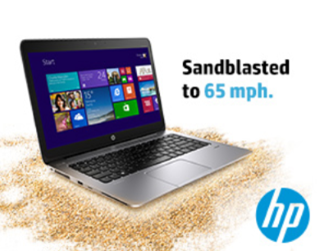Parsing HP’s perspective on the Software-Defined Datacenter - Part 2
This is Part 2 of a three-part post based on my understanding of the basics of the definition of the software-defined datacenter as HP sees it, and as espoused by Helen Tang, HP Converged Infrastructure Worldwide Solution Lead in this blog post here.
Part 1 was about the basics of what HP sees the SDDC as, and this, Part 2, are my thoughts on her list of requirements for the SDDC journey, and Part 3 will be on what I think of what HP is publicly doing in order to enable this.
The 3-part series may be interspersed by a post on my reasons for focusing on HP.
In the HP Converged Infrastructure blog post, While Software-Defined holds the promise of changing everything – you need to do your homework, the author, Helen Tang, (@hpdatacenter) list the following prerequisites for a successful journey to software-defined awesomeness.
What You Need to Do to Get There
As you can probably imagine, a lot of changes must be set in motion to pave the road to SDDC. For starters, you need to do these three things:
-
Abstract and virtualize all workloads and activities
On the face of it, this part should be relatively easy. As long as DC components are easy for virtualization, it should be swiftly accomplished. If your DC components aren’t ready for virtualization, you shouldn’t think of a software-defined datacenter in the near term.
-
Automate all your underlying infrastructure to completely eliminate manual configurations
This is where work actually starts.
As I think of our little ‘datacenter’, my thoughts center around what products can’t be manually configured, what applications would need ISV input in order to work?
-
Migrate all applications to modern operating systems that support application aware APIs
Another hard one. However, if your LOB applications require a server operating system older than Windows Server 2008 R2, then you have a problem. You HAVE to bring you environment forward.
These three prerequisites, though small in number, require a lot of thought before the commencement of an SDDC upgrade/migration.
What SDDC pre-requisites do we need from our vendors?
But that’s just what you need to do yourself. To get there, you’ll also need a lot of help from your strategic vendors. If we’re talking about the complete picture, what you really need are:
-
Software Defined Infrastructure Solutions
Of course. If not…..
-
Converged Management Software (that span physical and virtual)
This, and the point above are the reasons why choosing the right SDDC solution is of paramount importance.
You seriously cannot go with the Flava-O-The-Month provider, and expect that solution to either fit your current needs, or have the resources to develop for your future needs.
-
Flexible Facilities – yes, don’t forget your physical data center facilities
Unlike cloud ISPs, most firms cannot acquire new physical plants to build out their datacenters, so flexibility and reuse must be the norm.
-
Reference Architecture that is open and extensible
AKA ‘every little bit helps’. Just like HP’s Cloud Maps, being able to refer to reference architectures and best practices would greatly ease, and enhance the architecting of bespoke solutions.
-
Open Source that is enterprise ready, hardened and fully supported
Open Standards, I agree with. I need some time on Open Source.
-
And very likely, consulting services to help your teams make each of the component transitions in moving to an SDDC approach
I look at the acquisition of consulting services as a must. Good consultants always reduce the amount of time and resourced that companies have to deploy in order to adequately implement a solution
Part 3 follows shortly.
The source article is While Software-Defined holds the promise of changing everything – you need to do your homework, and is on HP’s Converged Infrastructure Blog
The What is Software-Defined Series
· Someone please explain software-defined to me
· The Software-Defined Datacenter, a perspective from HP’s Chris Purcell
· Software-Defined Storage: A ChalkTalk by HP’s Calvin Zito
· Parsing HP’s perspective on the Software-Defined Datacenter Part 1
